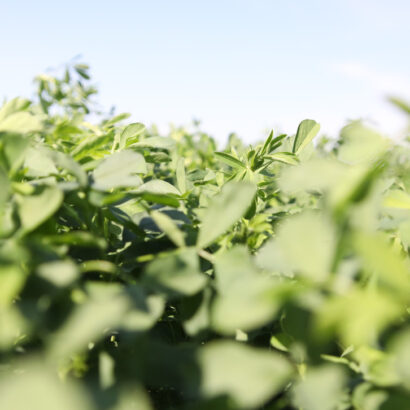Let’s say the Midwest has an early, warm spring, but it’s also staying dry. In this scenario we can plant a forage early, but believe that field will need to survive with less rain. So, what should we plant? The first species that I recommend is Spring Triticale. Triticale has had more advancements from breeding than nearly all other annual options, and it has a ton of versatility. Triticale was born from a cross of Rye and Wheat, so its hardiness under dry conditions is phenomenal. The advancements of having an awnless plant with wider bladed leaves and a taller, statured plant has made it top yielding and given it excellent quality. The other benefit from a breeding focus is more varieties that are widely adaptable. There are varieties bred better for silage or hay, and varieties that do better in Wisconsin or Texas. If Triticale is new to your vocabulary, do some product research and see how it could benefit your forage plan this spring. The Roots + Ruminants podcast even has an episode with a Triticale breeder – search for “Racey Padilla on Triticale Breeding” wherever you get your podcasts to listen.
The second forage that thrives in a drier climate and should absolutely be used more is Pearl Millet. Pearl is a warm season annual grass that re-grows to provide multiple cuttings or grazings. Since it is a C4 grass, its water efficiency is excellent, making it reliable through heat and drought. It’ll provide a harvest after about 70 days, and then again every 30 to 40 days. This schedule allows it to be planted as the main crop for multiple cuttings, or in a double cropping rotation for a single harvest. When comparing Pearl to common foxtail-type millets such as German and White Wonder, understand that the stem thickness is coarser. This means it will take extra time to cure for dry hay, but it makes higher quality hay due to the increased leaf to stem ratio. Also, since Pearl Millet tillers extremely aggressively, the yield is higher than any other millet species.
I think farming and ranching is most fun when you get to plant something new or breed with new livestock. These are two options that may be new to your farm that provide a profitable solution while working with the current growing conditions.




Discussion
0 Comments